Fixed! iPhone Asking for 6 Passcode Instead of 4
Does your iPhone/iPad asking for 6 digit passcode instead of 4 2025, when you have never set up before after an update or factory reset? Don’t worry! The article below provides you with 5 proven solutions to help you get rid of the ‘iPhone/iPad asking passcode’ issue.
AnyUnlock – Unlock iPhone without 6 Digit Passcode
Free download AnyUnlock to unlock iPhone without any Passcode, whether it’s a 4-digit, 6-digit password, or a password that has never been set.
Apple is constantly updating its security measures to protect your device. One of them is changing a 4-digit passcode to a 6-digit one by default. This update certainly provides more protection for your device, as there are more combinations for 6 digits and such screen passcodes are harder to crack.
Apparently, another 2 more digits make many iOS users feel confused after the update. Some of them have never set up a password, while others only used the 4-digit passcode before. They run into trouble after an iOS update or factory reset since they are asked for a 6-digit passcode instead of 4. Or some users may encounter iPhone asking for passcode i never set. If a similar situation happens to you, you can find why this issue happens and how to fix it in the article below.
Further Reading: How to Fix iPhone Locked After Update [iOS 15] >
Why Does My iPhone Now Require 6-digit Passcode?
Why is my iPhone asking for a 6-digit passcode when I don’t have one and why is my passcode 6 digits and not 4? In recent days, some iPhone users may face the dilemma that iPhone asking for passcode they never set. As a matter of fact, asking for a passcode by default is a security measure that Apple takes to protect your device after updating to iOS 14. It can frequently occur if you recently updated your device to the latest version or you’ve performed a factory reset on iPhone. In this post, we’ll demonstrate 5 proven ways to resolve the ‘iPhone/iPad asking for 6 digit passcode instead of 4′ issue. They are also workable for iPhone asking for a passcode even if you never set.
How to Fix iPhone Asking for 6 Digit Passcode Instead of 4? Then, what happens when you are asked for the passcode, but the digits don’t match your setting, or you don’t even have one? Does this mean you can never access your iPhone again? This is not the case! You can find out how to fix iPhone when it’s asking for a 6-digit passcode after the update in the section below.
Fix 1. Try Any Default Passwords
New iPhone asking for passcode? To fix iPhone asking for 6 digit passcode instead of 4, you may try some default passcodes. What is the default 6-digit passcode for iPhone? Normally, you can give ‘123456‘ or ‘000000‘ a try. This method especially works for new iPhone users who never set any passcode before.
When successfully getting access to your iPhone after using a default passcode, you should update it to a more secure passcode of your choice. Here’s how to do so in Settings:
Step 1. Go to Settings and choose Touch/Face ID & Passcode.
Step 2. Enter your passcode. This could be the one you set before or you can also try the default passcode.
Step 3. Scroll down to find Change Passcode and tap it.
Step 4. Enter your old passcode again. This could be the one you set before or you can also try the default passcode.
Step 5. Then, enter your new 6-digit passcode. You can change passcode options by tapping Passcode Options.
Step 6. Verify your new passcode by entering it again.
Now your passcode should be updated to a new 6-digit one.
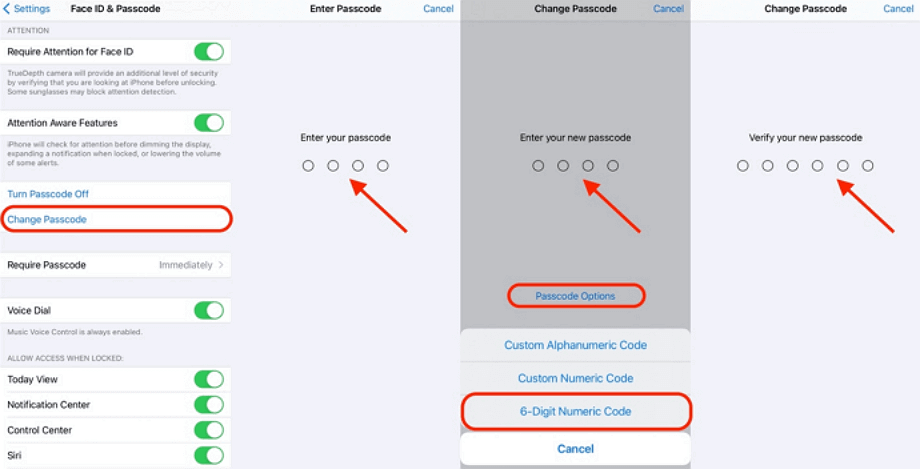
Change Passcode in Settings
Fix 2. Bypass 6-Digital Passcode in Simple Clicks Directly [SAFE & EASY]
If the default passcode fails to help you access your iPhone, you are highly suggested to get rid of the 6-digital passcode using an iPhone unlocker. Among these tools and software, you should give AnyUnlock a shot! No matter whether your iPhone is asking for passcode you never set or you forgot your screen passcode, AnyUnlock can give you corresponding solutions.
Additionally, as a complete iPhone unlock solution, AnyUnlock can also help you get rid of Apple ID/iCloud account, iTunes backup password, screen time password, SIM lock, MDM restriction lock, and other common iPhone locks. It is user-friendly and easy to operate. All you need to do is to free install AnyUnlock and connect your locked iPhone to the computer – either PC or Mac computer. Afterward, you can take the following steps to bypass the 6-digital passcode when iPhone asking for 6 digit passcode that you never set.
Free Download* 100% Clean & Safe
Step 1. Free download AnyUnlock on your computer > Launch the program and choose the Unlock Screen Passcode mode on the welcome page.
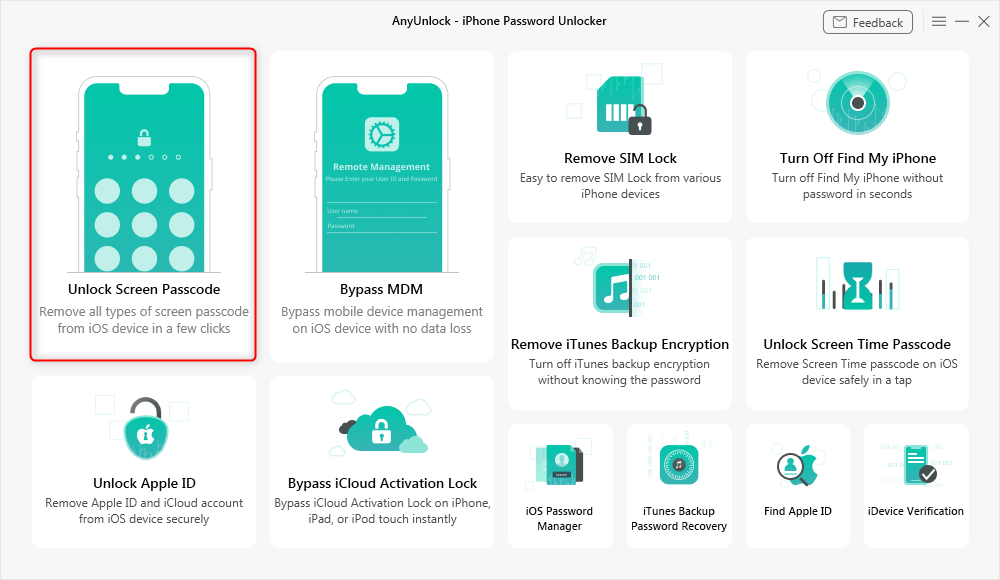
Choose Unlock Screen Passcode
Step 2. Tap on the Start Now button > View the device information > Download the iOS firmware that can match your iPhone device.
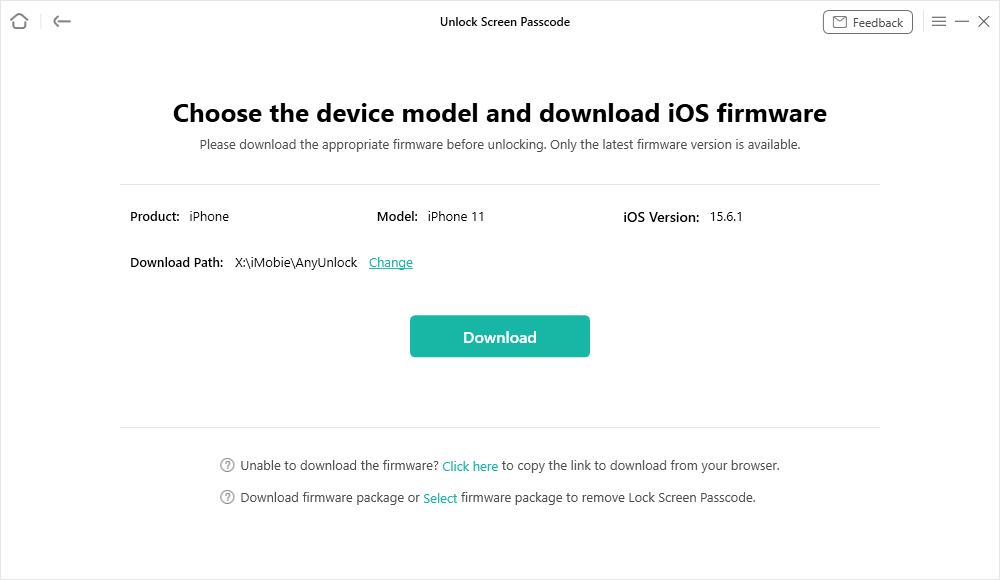
Get a Matching Firmware
Step 3. When the firmware is downloaded, click on the Unlock Now button to initiate the unlocking process.
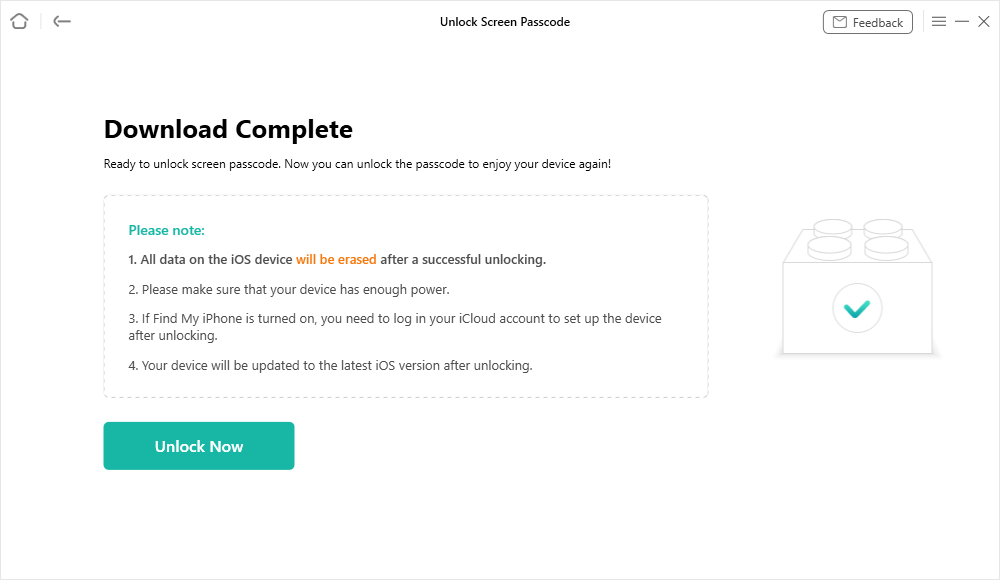
Tap on Unlock Now to Continue
Step 4. Wait for a few minutes and you will see the Screen passcode removed successfully screen as below.
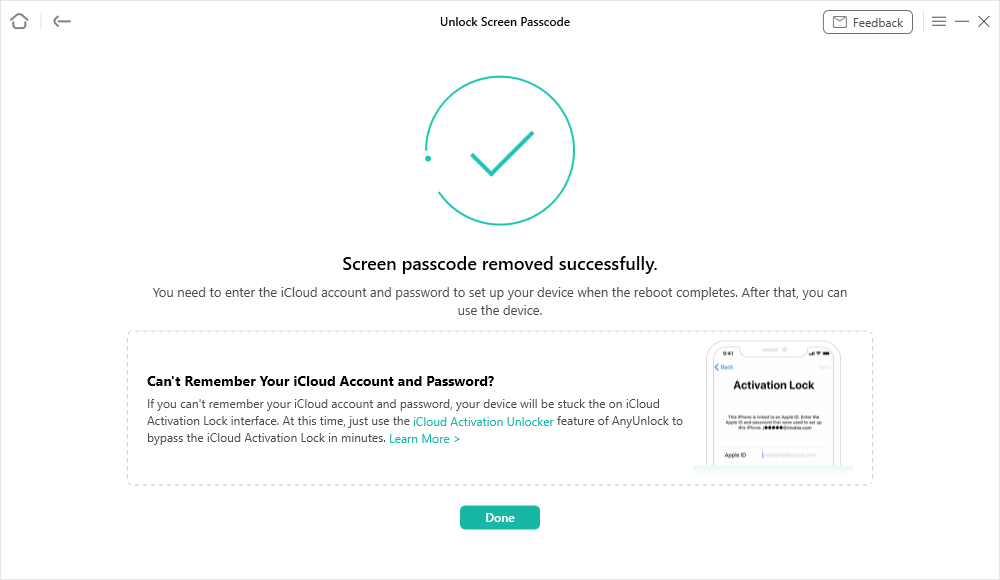
Screen Passcode Removed Successfully
Fix 3. Force Restart Your iPhone
Forcing to restart the iPhone is often a good way to resolve problems on your iPhone. The password settings on your iPhone may be corrected after a restart. Steps to force restart an iPhone are different for different versions of the iPhone. Learn about how to force restart your iPhone below:
For iPhone X, 11, 12, or 13:
Step 1. Press and hold any volume button and the side power button until you see the slider that says slide to power off.
Step 2. Drag the slider to turn your iPhone off.
Step 3. After it’s completely off, press and hold any volume button and the side power button together again. When you see the Apple logo, release your finger. Your phone is now back on.
For iPhone SE (2nd generation), 8, 7, or 6:
Step 1. Press and hold the side power button until you see the slider that says slide to power off.
Step 2. Drag the slider to turn your iPhone off.
Step 3. After it’s completely off, press and hold the side power button again until you see the Apple logo.
For iPhone SE (1st generation), 5, or any version earlier:
Step 1. Press and hold the top power button until you see the slider that says slide to power off.
Step 2. Drag the slider to turn your iPhone off.
Step 3. After it’s completely off, press and hold the side top button again until you see the Apple logo.
After the force restart, check to see if the passcode required matches the one you set before.
Read Also: How to Fix iPhone Passcode Not Working >
Fix 4. Try to Remove Password via iCloud
If the mentioned solutions didn’t help you out with the problem, you can try to remove the passcode from your iPhone via iCloud. Using iCloud to erase all content and settings from your iPhone allows it to remove the passcode you set. Then, after you successfully get access to your iPhone again, you can restore the data on your iPhone with an iCloud backup. See how to do so with the steps below:
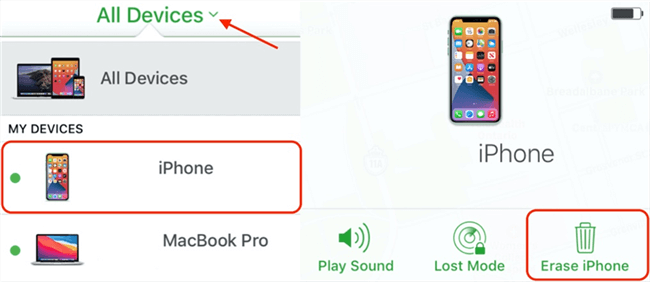
Erase iPhone via iCloud
Step 1. Sign in to your iCloud account and click Find iPhone.
Step 2. Click All Devices to see a list of all your devices associated with this iCloud account. Select your iPhone.
Step 3. Click Erase iPhone.
Do not enter a phone number or message when prompted. This feature is to help find a lost device. The erase will begin when your device is online. Once finished, you will receive a confirmation email.
After these steps above, you should be able to get access to your iPhone again without the passcode. Then you can choose to set it up as a new phone or restore it with an iCloud backup.
Here’s how to restore your iPhone with an iCloud backup:
Step 1. When you reach the steps to reset your iPhone, proceed until you see the Apps & Data page. Tap Restore from iCloud Backup on this page.
Step 2. Sign in to your iCloud account with your Apple ID and password.
Step 3. Select the backup with which you wish to restore your iPhone.
With the above steps, your iPhone should be restored with a backup via iCloud. However, please note that this method involves erasing all content and settings from your iPhone. Therefore, please make sure to check the version of the iCloud backup you have so that you won’t lose any data or settings. Please also consider fixes 1 and 2 if you don’t have a proper backup for your iPhone.
Fix 5. Try to Remove Password via iTunes
iCloud is not the only place where you can remove a password and restore your device. You can also fix it via iTunes. To do so, you should first get your iPhone into recovery mode. Let’s see how to turn off your iPhone and get it into recovery mode.
If you have an iPhone X or later, iPhone SE (2nd generation), or iPhone 8 and 8 Plus:
Step 1. Press and hold the side button and the volume down button. When you see the power off slider, drag it to the right to turn your phone off.
Step 2. Press and hold the side button while connecting your phone to the computer. Do not release it until you see the recovery mode screen on your iPhone.
If you have an iPhone 7 and 7 Plus:
Step 1. Press and hold the side button. When you see the power off slider, drag it to the right to turn your phone off.
Step 2. Press and hold the volume down button while connecting your phone to the computer. Do not release it until you see the recovery mode screen on your iPhone.
If you have an iPhone SE (1st generation) or iPhone 6s and earlier:
Step 1. Press and hold the side or top button. When you see the power off slider, drag it to the right to turn your phone off.
Step 2. Press and hold the Home button while connecting your phone to the computer. Do not release it until you see the recovery mode screen on your iPhone.
Step 3. In the upper-left corner of your iTunes, you will see a phone icon. Click it to view a list of your connected iPhones.
Step 4. Click the one you wish to restore. You should see a window pop-up saying that “There is a problem with the iPhone that requires it to be updated or restored“.
Step 5. Click on Restore.
After the above steps, you should be able to regain access to your iPhone without a passcode. However, this method involves restoring your device and thus may cause data loss. Therefore, please consider fixes 1 and 2 if you don’t have a proper backup for your iPhone.
The Bottom Line
Has iTunes or iCloud helped you regain access to your iPhone after an update or factory reset? If not, please feel free to install AnyUnlock when iPhone asking for 6 digit passcode instead of 4. Our help is on the way!
Free Download* 100% Clean & Safe
Product-related questions? Contact Our Support Team to Get Quick Solution >


